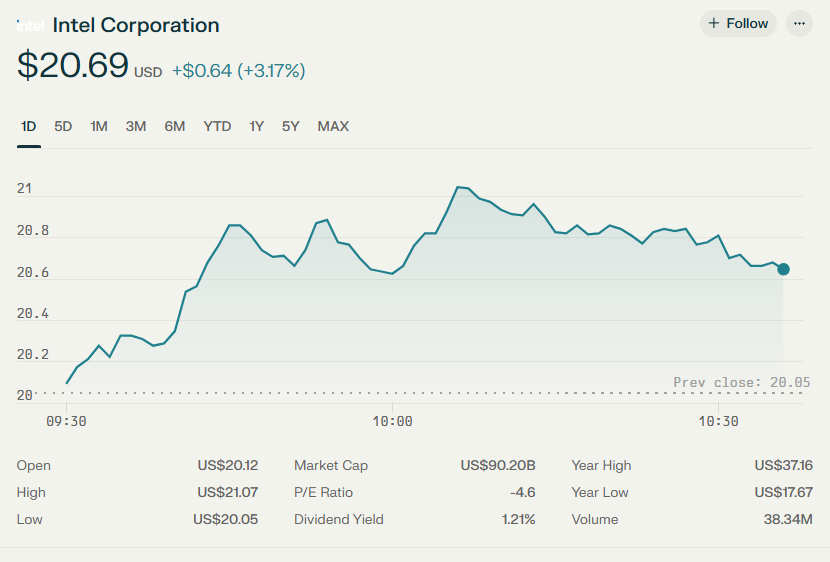Intel Corporation (NASDAQ: INTC) has come under renewed scrutiny from major financial institutions, with JPMorgan, UBS, and DBS Bank all lowering their price targets on the chipmaker amid ongoing financial pressures and a cautious industry outlook.
JPMorgan has reduced its price target for Intel shares to $20 from $23, maintaining an Underweight rating. The firm cited Intel’s recent quarterly results, which exceeded expectations due to a pull-forward in demand ahead of potential tariffs.

However, JPMorgan expressed concern over Intel’s guidance for the June quarter, which came in well below consensus estimates. The bank also noted that management now sees prior growth outlooks for both the PC and server segments as at risk, prompting another round of estimate cuts.
UBS followed suit, adjusting its price target to $21 from $22 while keeping a Neutral rating on Intel stock. UBS analysts acknowledged that Intel surpassed expectations in the first quarter but warned that the company’s outlook for the coming months remains subdued.
The firm highlighted the anticipated negative impact of tariffs on demand starting in June and gave Intel only limited credit for recent margin improvements, citing a lack of significant revenue growth.
DBS Bank also revised its view on Intel, lowering its price target to $22 from $24.50. The adjustment reflects a more cautious stance as the company navigates a challenging macroeconomic environment and ongoing competitive pressures in the semiconductor industry.
These price target reductions come as Intel faces a series of headwinds, including stagnant PC sales, intensifying competition from rivals like AMD, and the looming threat of new tariffs that could dampen demand for its products. While Intel’s leadership is pursuing cost-cutting measures and a renewed focus on AI and foundry services, analysts remain wary about the company’s ability to quickly regain momentum.
The consensus among these major financial institutions signals a cautious near-term outlook for Intel, with investors advised to closely monitor the company’s execution on its restructuring plans and the broader industry’s response to evolving trade and market conditions.